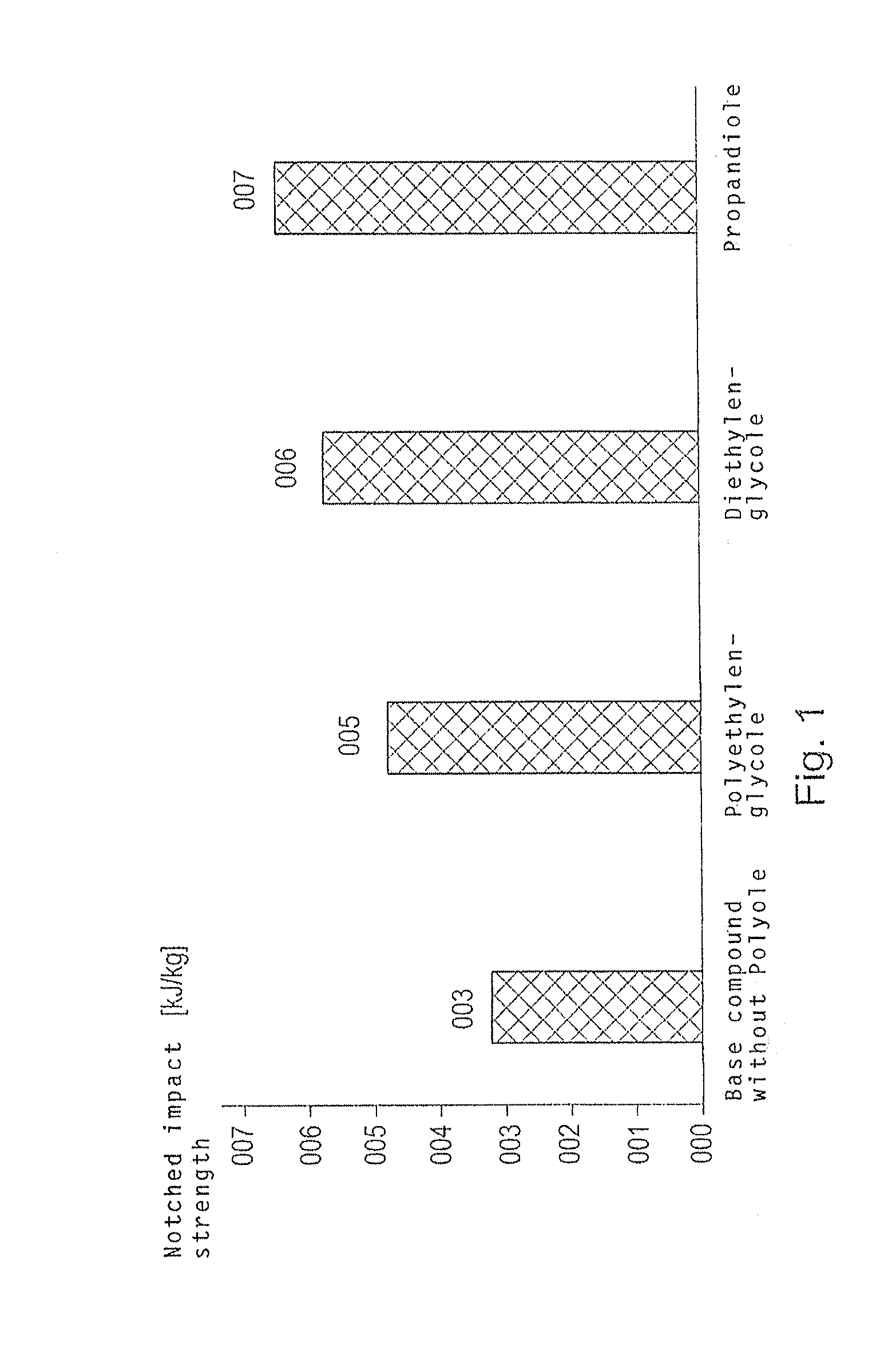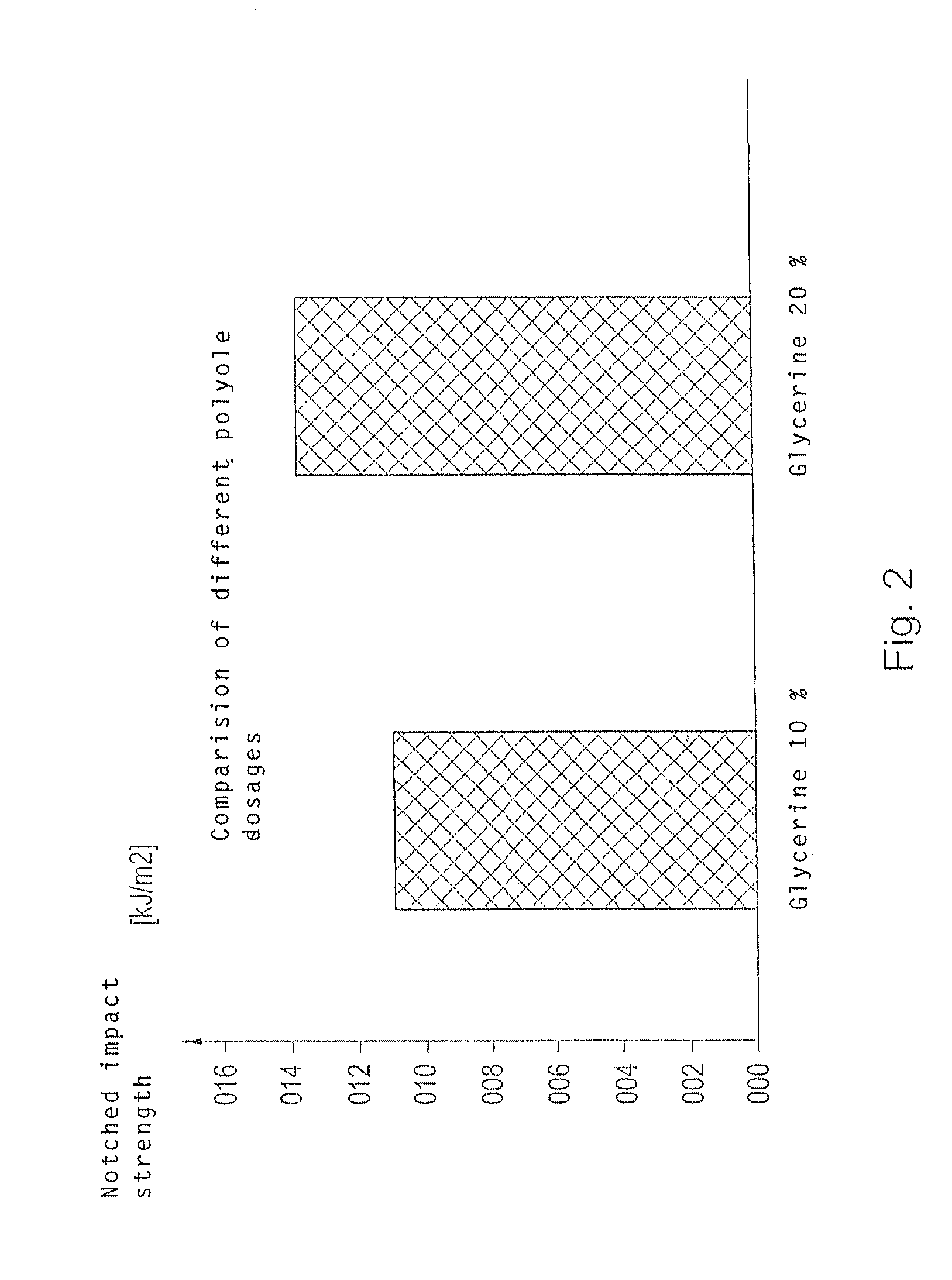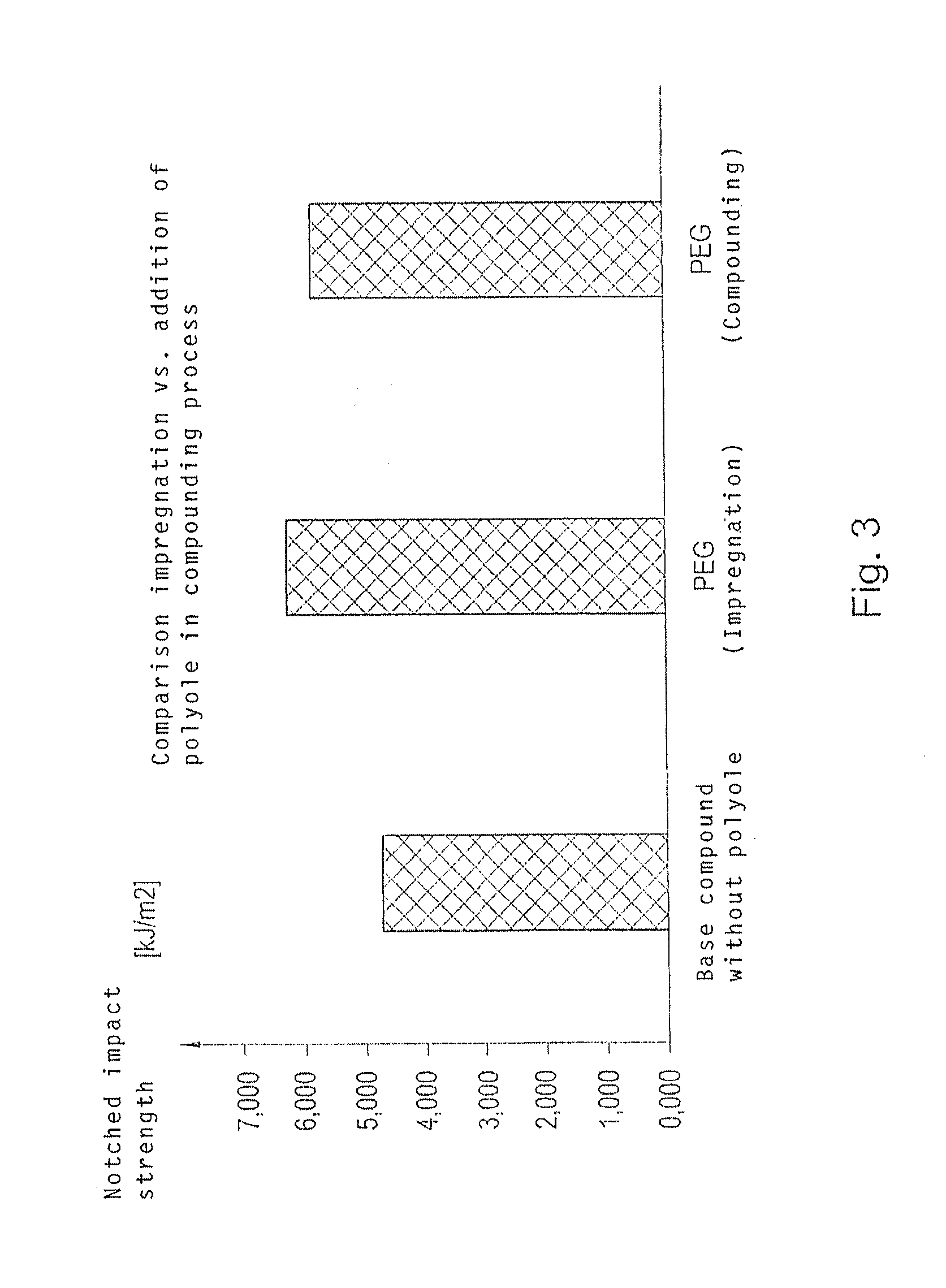Composite material containing renewable raw materials and method for the production thereof
a technology of renewable raw materials and composite materials, applied in the field of composite materials, can solve the problems of limited use purpose of such materials, reduced impact strength or notched impact strength of products produced thereof, and limited success, and achieve the effect of increasing notched impact strength
- Summary
- Abstract
- Description
- Claims
- Application Information
AI Technical Summary
Benefits of technology
Problems solved by technology
Method used
Image
Examples
example 1
[0027]To produce a composite according to the invention, the starting substances of a. composite material, i.e. 80 wt % polypropylene and 20 wt % cellulose fibers, are kneaded in an internal mixer at 180° C. for 4 minutes and pressed info a composite. The notched impact strength of the thus produced composite was determined to be 3.27 kJ / m2. The starting material was subsequently changed by replacing 2 wt % of the polypropylene with a wetting agent and producing composites using the same process control. When adding 2 wt % of polyethylene glycol, the notched impact strength can be increased to 4.77 kJ / m2, after the addition of 2 wt % diethylene glycol, the notched, impact strength is increased to 5.79 kJ / m2, and when adding propanediol, the notched impact strength can be raised to 6.51 kJ / m2, as can be taken from annexed FIG. 1.
example 2
[0028]The mode of procedure of Example 1 is repeated with the exception that the amount of the employed wetting agent is varied in order to be able to recognize the influence of the amount of wetting agent on the notched impact strength.
[0029]Into the starting material of Example 1 was mixed 2 wt % glycerol as wetting agent, whereupon a notched, impact strength of 10.55 kJ / m2 was achieved. When adding 4 wt % of glycerol to the same starting mixture, an increase in the notched impact strength to 13.82 kJ / m2 will result, as can be taken from FIG. 2. From this comparison, it can be seen that an increase in the amount of addition will also increase the notched impact strength.
example 3
[0030]A base composite material as described in Example 1 was produced without any wetting agent added. The thus produced base composite material was compared to a composite material containing 20% fiber portion and 2% wetting agent, wherein the process control was once selected as described in Example 1, by which method a notched impact strength of 5.85 kJ / m2 was obtained, as compared to a notched impact strength of 4.75 kJ / m2 with a composite material having no wetting agent added. The wetting agent was a polyethylene glycol with an average molecular weight of 150.
[0031]In another process control, the polyethylene glycol was finally used to impregnate the cellulose fibers prior to their introduction into the internal mixer, and the thus impregnated cellulose fibers were subsequently charged into the internal mixer and mixed with the plastic base material as described in Example 1, and pressed into a composite. A composite produced in this manner, as compared to the production meth...
PUM
| Property | Measurement | Unit |
|---|---|---|
| Impact strength | aaaaa | aaaaa |
| Wetting tension | aaaaa | aaaaa |
Abstract
Description
Claims
Application Information
 Login to View More
Login to View More - R&D
- Intellectual Property
- Life Sciences
- Materials
- Tech Scout
- Unparalleled Data Quality
- Higher Quality Content
- 60% Fewer Hallucinations
Browse by: Latest US Patents, China's latest patents, Technical Efficacy Thesaurus, Application Domain, Technology Topic, Popular Technical Reports.
© 2025 PatSnap. All rights reserved.Legal|Privacy policy|Modern Slavery Act Transparency Statement|Sitemap|About US| Contact US: help@patsnap.com



